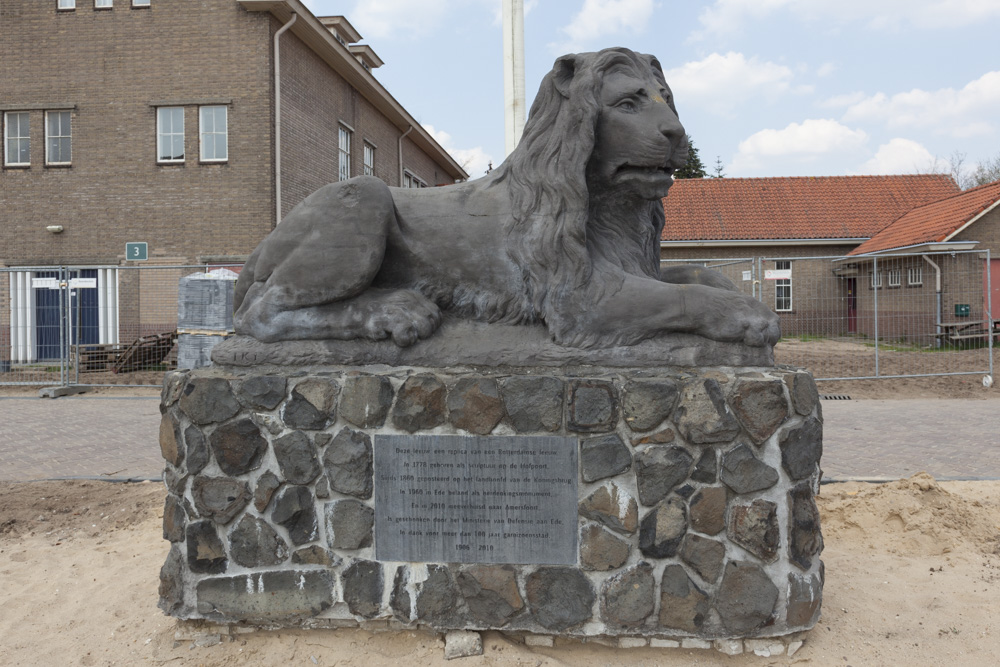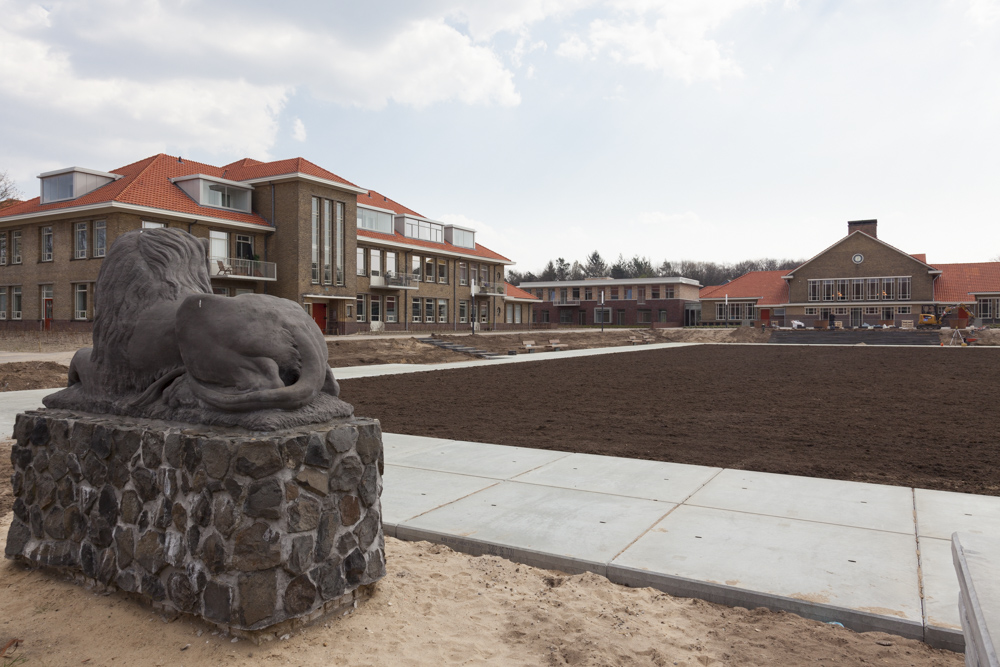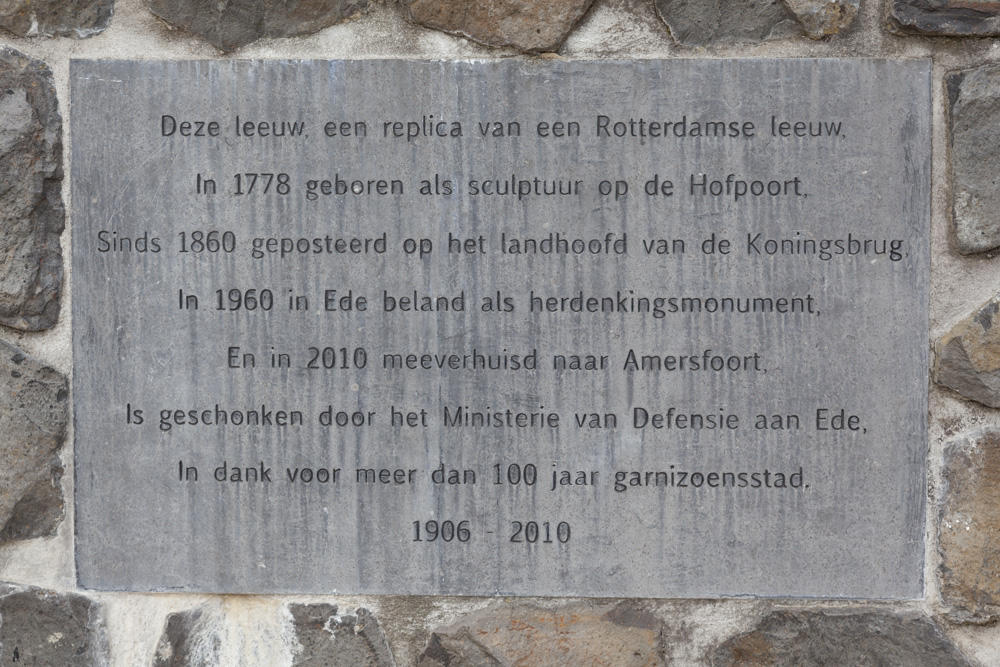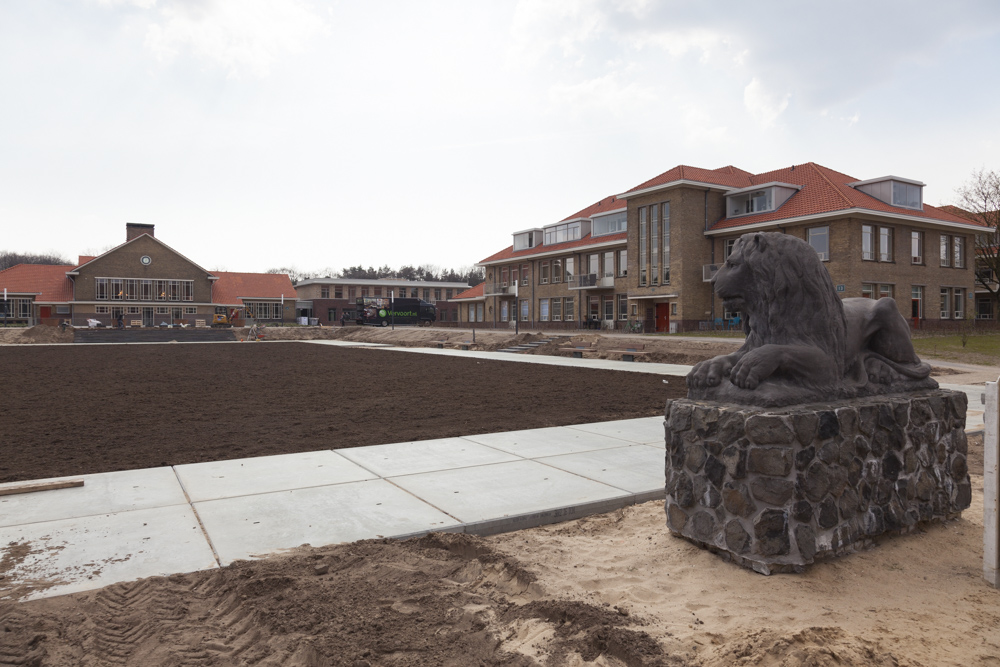Replica Memorial Signal Corps
History of the memorial
The municipality of Rotterdam ordered four lions from sculptor J. Keerbergen for the new Hofpoort, which was opened in 1772. The lions were placed at the roof of the gate. In 1833 the Hofpoort was demolished. The four lions were stored. In 1860 the lions got a new destination: they were placed at the new Konings bridge. This bridge was soon known as the Vierleeuwenbrug (the four lions bridge). The bridge was opened by King Willem III on 13 September 1860.
On 10 may 1940, at the outbreak of World War Two, the Signal Corps was involved in heroic fighting around the Vierleeuwenbrug. The Germans couldn't break through to Den Haag in one day, as they had planned. Through the cooperation between several Dutch army units, the defence of the bridge and the area was succesful. After the bomb raid on 14 may 1940, the Dutch army stopped their actions.
On 17 August 1960, a hunderd years after the opening of the Konings bridge, Mayor of Rotterdam Mr. G.E. van Walsum gave the Signal Corps one of the lions in long term loan on behalf of the municipality of Rotterdam. This was to commemorate the herioc actions of the Signal Corps around the Konings bridge / Vierleeuwen bridge.
This lion was placed at the northern side of the Elias Beekman barracks in Ede. Since that day, "The Lion" is the memorial of the Signal Corps.
On 8 May 1991 the memorial was extended with a plaque with the names of the Servicemen who were killed in Rotterdam in the period 10 - 14 May 1940.
In 1993 more plaques with the names of killed men of the Signal Corps were attached to the memorial.
In 2010 the barracks in Ede were closed. The memorial is transferred to the Bernhard Barracks in Amersfoort. The lion is put on a new base. On the old base here in Ede een replica of the lion has been installed.
Do you have more information about this location? Inform us!
Source
- Text: Arjan Vrieze
- Photos: Arjan Vrieze
Nearby
Museum
- War and- Garrison museum 'De Smederij' - Ede
- The Liberation Hall Museum "De Casteelse Poort" Wageningen - Wageningen
- Betuws War Museum "The Island" 1944-1945 - Heteren
Point of interest
Monument
- Memorial Repair Amphitheatre Ede - Ede
- Liberation Memorial Ede - Ede
- Memorial Killed Soldiers Ede - Ede
Cemetery
Remembrance Stone
- Stumbling Stones Schoolstraat 38 - Bennekom
- Stumbling Stones Prins Bernhardlaan 28 - Bennekom
- Stumbling Stones Commandeursweg 29 - Bennekom
Fortification
- Bunker at the Harsloweg - Bennekom
- Grebbe Line - SZW Casemate GLZ17 - Rhenen
- Grebbe Line - Remains G Kazemat GLZ18 - Rhenen








